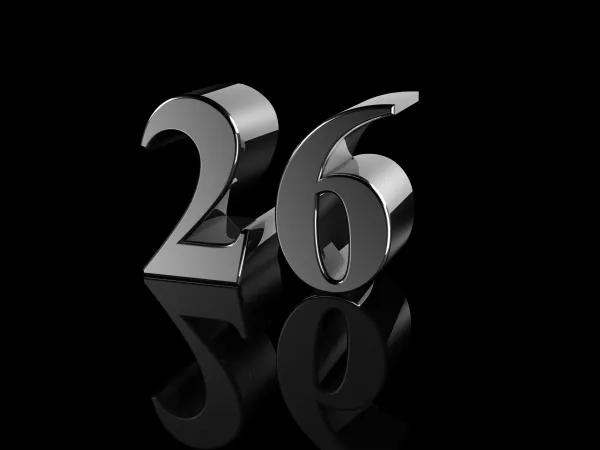Neurosurgery Coding Alert
Correctly I.D. and Code this Neurosurgery Op Report
Know how to distinguish between procedures and correctly append modifiers. There's a lot to consider when translating a set of procedures into their correct procedural codes. Operative reports can be tricky regardless of the specialty, but neurosurgery coders have to be among the most skilled when it comes to accurately identifying a set of procedures within a surgical note. In today's example, you will review a list of procedures from an operative note and be required to come up with the correct CPT® code for each part of the surgery. While this may be easier than correctly identifying each procedure within the operative note, as you'll see, you've got to take numerous factors into account when mapping out each procedural code included in the report. Work your way through the following list of procedures and abide by these rules to match the correct procedure code with its respective procedure. Break Down Procedure into Individual Components Procedure List: Your first course of action should be interpreting and deciphering each individual procedure. Here's a breakdown of the procedures performed and their respective anatomical sites: Next, outline the various additional facets to each procedure, such as spinal instrumentation devices and grafting: All in all, you should be left with 10 individual codes to represent the procedures, instrumentation, and grafting. Determine Correct Code and Modifier Set Since the physician documents a decompressive corpectomy, you will apply code 63081 (Vertebral corpectomy [vertebral body resection], partial or complete, anterior approach with decompression of spinal cord and/or nerve root[s]; cervical, single segment). If the provider had performed a corpectomy for excision of an intraspinal lesion, you would apply code 63300 (Vertebral corpectomy [vertebral body resection), partial or complete, for excision of intraspinal lesion, single segment; extradural, cervical]). Next, you will address the anterior cervical fusion and discectomy codes. For C3-C4, you will apply code 22551 (Arthrodesis, anterior interbody, including disc space preparation, discectomy, osteophytectomy and decompression of spinal cord and/or nerve roots; cervical below C2). Additionally, you will apply modifier 59 (Distinct procedural service) (or XU [Unusual Non-Overlapping Service] for Medicare patients) to 22551 due to the correct coding initiative (CCI) edit between 63081 and 22551. For C6-C7 and C7-T1, you will apply code +22552 (... each additional interspace [List separately in addition to code for separate procedure]) twice, one for each additional interspace. Additionally, you will apply modifier 59 to each of these codes as well due to the CCI edit. Your next step is to tackle the C4-C5 and C5-C6 anterior cervical fusions. For these procedures, apply code 22554 (Arthrodesis, anterior interbody technique, including minimal discectomy to prepare interspace [other than for decompression]; cervical below C2) for C4-C5 and +22585 (... each additional interspace [List separately in addition to code for primary procedure]) for C5-C6. Since CCI bundles these procedures with code 22551, you will apply modifier 59 to both of these procedures as well. "The above mixture of bundled decompression/arthrodesis codes 22551/+22552 and non-bundled corpectomy/arthrodesis codes 63081/22558/+22585 illustrate some of the challenges in correctly navigating the component coding in complex spine surgery," says Gregory Przybylski, MD, interim chairman of neurosurgery and neurology at the New Jersey Neuroscience Institute, JFK Medical Center in Edison. "Notice that the C5 corpectomy reported with CPT® 63081 includes the discectomy above and below C5 - C4-C5 and C5-C6 - precluding reporting of 22551/+22552 for these levels as well. Since the discectomies adjacent to the C5 vertebral body are included in CPT® 63081, the arthrodesis codes 22554/+22585 must be employed to account for the fusion performed," Przybylski explains Lastly, you want to establish codes for the cages, plate, and autograft. For the anterior cervical fusion discectomy cages at C3-C4, C6-C7, and C7-T1, you will apply code +22853 (Insertion of interbody biomechanical device[s] [eg, synthetic cage, mesh] with integral anterior instrumentation for device anchoring [eg, screws, flanges), when performed, to intervertebral disc space in conjunction with interbody arthrodesis, each interspace [List separately in addition to code for primary procedure]). Apply three of these codes for the three cervical/cervicothoracic interspaces. There is additionally a cage placement at the C5 corpectomy defect, which is correctly reported with CPT® +22854 (Insertion of intervertebral biomechanical device[s] [eg, synthetic cage, mesh] with integral anterior instrumentation for device anchoring [eg, screws, flanges], when performed, to vertebral corpectomy[ies] [vertebral body resection, partial or complete] defect, in conjunction with interbody arthrodesis, each contiguous defect [List separately in addition to code for primary procedure]). For the separate C3-T1 plate, you will use code +22846 (Anterior instrumentation; 4 to 7 vertebral segments (List separately in addition to code for primary procedure)). Since anterior spinal instrumentation (e.g. +22846) bundles into +22853 and +22854 when a separate plate is not used (i.e. anterior spinal fixation is not separately reportable when integrated fixation through the cage is performed), you will use modifier 59 for this code. Morselized allograft is reported with CPT® +20930. Finally, for the harvest autograft of the same site, apply code +20936 (Autograft for spine surgery only (includes harvesting the graft); local (eg, ribs, spinous process, or laminar fragments) obtained from same incision (List separately in addition to code for primary procedure)). All in all, your coding will present as follows:
Related Articles
Neurosurgery Coding Alert
- CPT® Coding:
Correctly I.D. and Code this Neurosurgery Op Report
Know how to distinguish between procedures and correctly append modifiers. There's a lot to consider [...] - Compliance:
Check Payer Guidelines for E/M, Non-OR Services within Global Period
Know when a payer's policies may not align with CMS. Medicare's rules are clear-cut when [...] - ICD-10 Coding:
Work Out Combination, Complication Dxs with These 2 Examples
Remember to check ICD-10-CM guidelines, even for obscure cases. Diagnosis: Arteriosclerotic-induced ruptured cerebral aneurysm of [...] - You Be the Coder:
Factor in Adverse Effect Guidelines for Conditions following Chemotherapy
Question: What ICD-10 code should I use for a consultation for vomiting following chemotherapy? Ohio [...] - Reader Question:
Outline Differences Between Unspecified, Uncertain Behavior
Question: A patient presents with a tumor of the cerebrum. The physician biopsies the tumor [...] - Reader Question:
Avoid Separate Code for D&D with 63267
Question: How should I code for an L4-S1 laminectomy for drainage of epidural abscess and [...]




